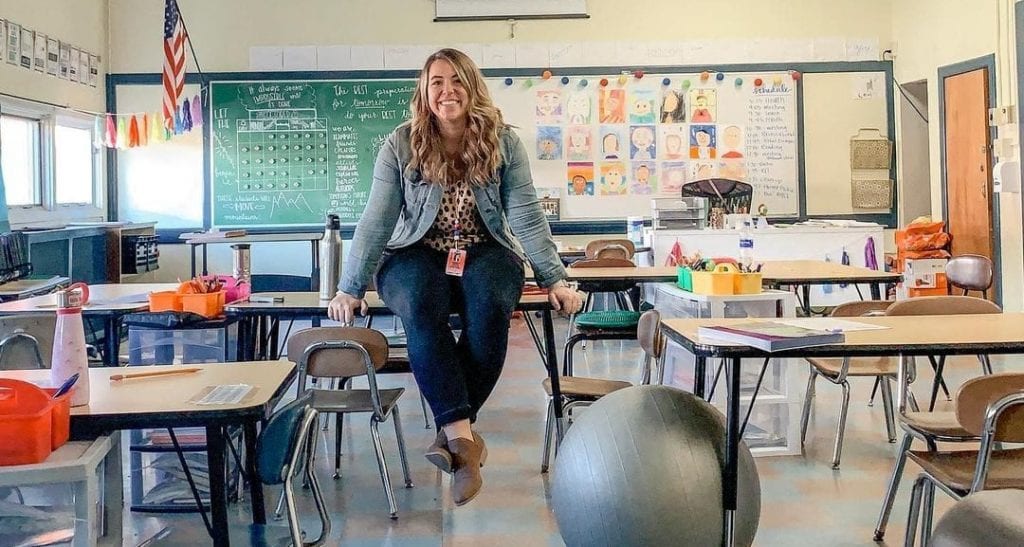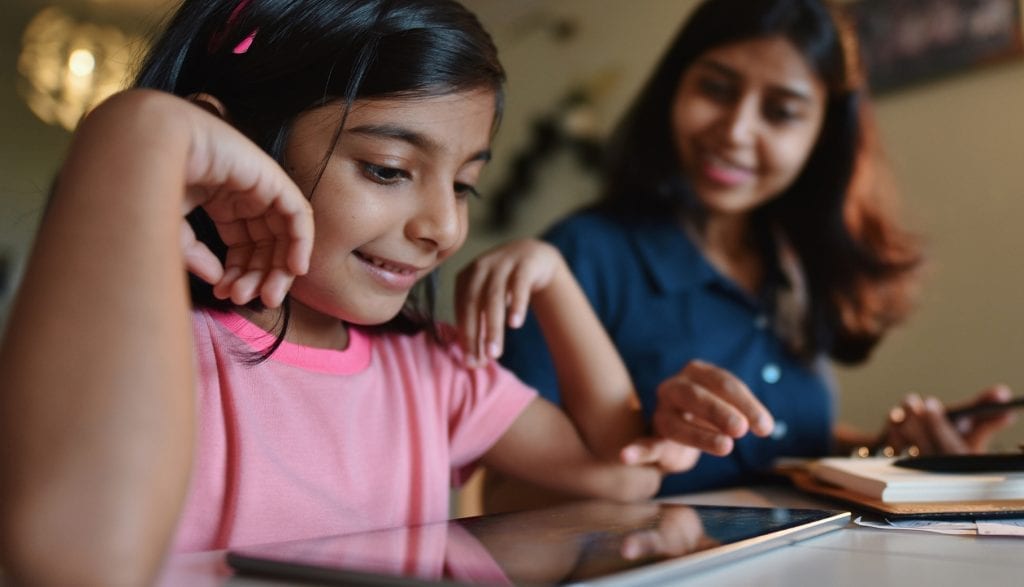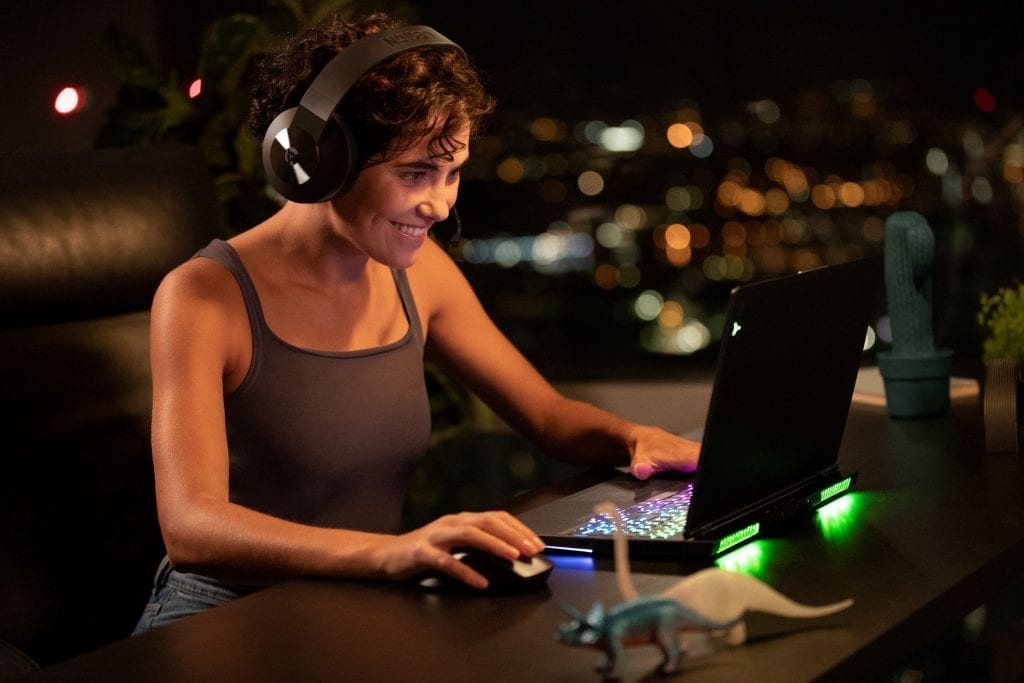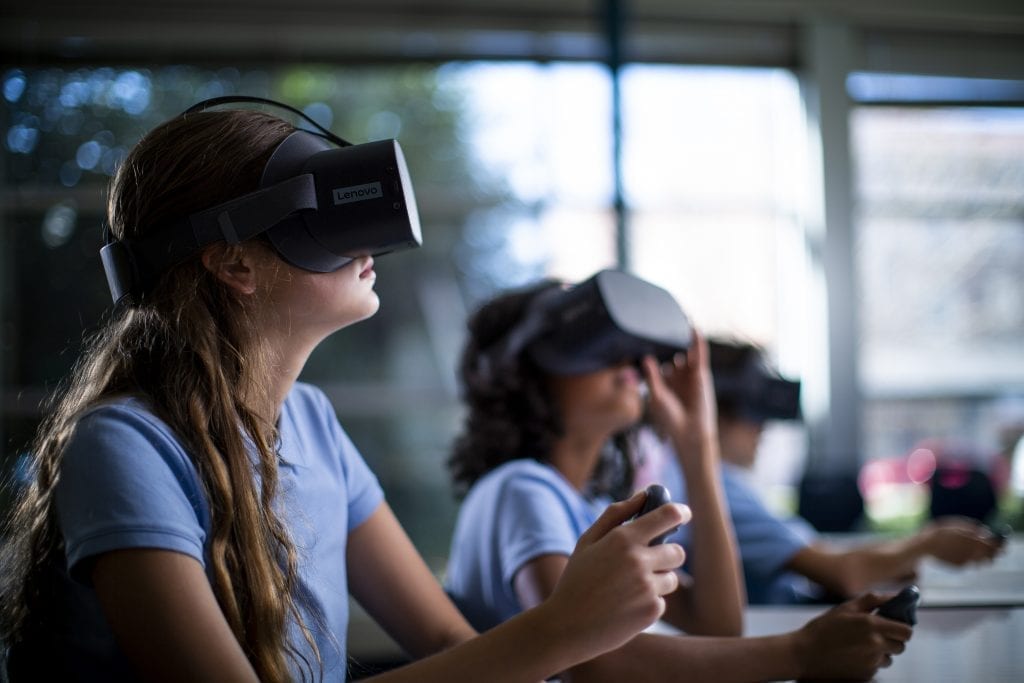Throughout the course of the COVID-19 pandemic, the word “hero” continues to find its way into the headlines – but not the kind you find in comic books or action movies.
In 2020, hero means delivery workers who travel countless miles to provide food and sanitation supplies; nurses and doctors working around the clock to combat an unseen enemy and save lives; and teachers like Jess Smith who, despite fully or partially closed classrooms in the name of social distancing, continue to figure out ways to educate their students.
“I feel like a superhero who is constantly checking emails, running a digital classroom, running an actual classroom, responding to worried parents, and staying on top of safety protocols,” says Smith. At the end of the day, she wipes away her sweat and tears and hopes she is doing enough to positively impact her students in this strange new world.
As third-grade teacher, Smith has quickly adapted to her school’s new ‘hybrid’ approach to learning this fall: a combination of in-class and virtual education.

This year, more than 1 billion students – over 90% of the world’s learners – have been impacted by school closures in 2020 due to COVID-19.
In order to continue teaching safely, schools and districts around the world have had to mobilize digital classrooms and reach their students online.
Transforming challenges into opportunities
The switch has not been without its challenges.
“Digital transformation has been underway in schools worldwide for the last several years,” says Rich Henderson, Director of Global Education Solutions at Lenovo. “But it’s been a slow transition. As a society, we had not yet crossed that threshold of full tech integration into our in-person instruction. When COVID-19 happened, it forced the digital transition on schools and teachers in a matter of weeks.”

The accelerated adoption of tech has meant teachers like Smith are adding the title of “IT support” to their growing list of responsibilities.
“We had to totally transform our classrooms into a virtual setup in a matter of a few days,” says Smith. “Technology is a blessing to have, because it allows us to continue educating under the circumstances, but there’s a significant lack of access to many students who may not have reliable Wi-Fi at home or own a device.”
The challenges of moving from in-person to digital instruction run the gamut. Investing in the right technology is a top concern, requiring schools to equip themselves with education-ready devices, more secure platforms, and compelling and effective digital curriculum to engage students under changing learning conditions.
Organizations like Lenovo are finding ways to help the global education crisis, both through charitable giving to underserved communities who can’t otherwise afford to adopt system-wide tech solutions, and also by pivoting their business models to better address the needs that come with distance learning.
“To respond to the need for strong education technology partners, we are shifting our focus to an end-to-end model for our partners and customers,” says Henderson, who introduced the company’s education solutions strategy this month at Lenovo’s Tech World event.
This means thinking of education solutions from top to bottom: launching full device fleets for students and teachers operating in remote and/or hybrid settings; providing software platforms and tools needed to manage remote and hybrid learning modules and content; offering robust digital curriculum and tools like Virtual Reality (VR) solutions to engage students (like swimming along coral reefs); and an increase in endpoint and cybersecurity protection to filter network access for at-home use.
Tech support extends to mental health
Beyond the immediate need for instructional innovation, there’s a growing need for support for students as they grapple with numerous interpersonal obstacles in the absence of an in-person environment.
Studies exploring the impact of COVID-19 on students’ emotional well-being report that 8 in 10 students struggle with avoiding distractions and focusing on school or work. Up to 74% of students say they’re struggling to maintain a routine, as they learn to self-manage their workloads.
Additionally, many students are experiencing loneliness, struggling with the isolation brought upon by quarantine orders and dealing with a lack of social interaction they would ordinarily find in an in-person setting.
”Technology can feel impersonal when you compare it to teaching in the classroom,” Smith says. “Students are not as engaged with each other or their teachers, and students who have more introverted personalities run a higher risk of becoming isolated in their digital worlds. They are not as likely to reach out to peers or have peers reach out to them. ‘Out of sight out of mind’ is a sad reality for some of these students.”
As a result, many schools employ the same technology used for instruction to help foster connection among the students, allowing for video chatting and messaging to help develop those relationships among classmates, and even turning to online gaming as a means to increase student engagement, promote interaction, and advance STEM learning.

“Esports is a great way for students to stay connected,” says Henderson. “We’ve partnered with many institutions for Lenovo’s Esports Solutions for Education to help mobilize programs in their schools to give students an outlet and finding community.”
Beyond socialization, online gaming can be a gateway for many students into academic pathways and higher education. Studies show that girls who play video games are three times more likely to pursue careers in science, technology, engineering, and math (STEM). The National Association of Collegiate Esports has more than 170 U.S. colleges with varsity esports programs and approximately $16 million per year in scholarships is being offered. Tespa, a network of college gamers, notes over 1,350 schools and 40,000 student e-athletes competed in its tournaments for $3.3 million in prizes and scholarships.
These kind of secondary benefits are a testament to some of the unintended yet positive benefits of adapting to digital education in the COVID-19 era. While the pandemic has certainly created less-than-ideal circumstances for students, there are some silver linings.
“Teaching is so much more than the ABC’s and 123’s,” says Smith. “It’s about preparing these kids for how to be kind, responsible adults that can thrive in an ever-changing world.”
In truth, students are developing hard and soft skills beyond the teachings of their coursework. Among the positives of the distance learning transition, students are learning operational technology skills through the use of integrated devices and software, as well as improving their presentation and time management skills.
“Students who struggle with public speaking due to anxiety or a lack of confidence find that the technology amplifies their voice and gives them the power of thought like never before,” Smith highlights. “They have new channels for interaction, like presentations, videos, or programs like FlipGrid, Screencastify, and PearDeck. Some students can Google chat me throughout the day to clarify parts of the curriculum they may not understand.”
Hybrid learning is here to stay
The pandemic has surfaced the benefits of hybrid learning that appears will stick as an educational model across all ages. The versatility that technology has introduced means that schools can work around other obstacles like avoiding disruptions during the regular school year due to snow days, or engaging students who are differently abled that might benefit from continued flexibility. The classroom as we once knew it has been forever changed.
Looking ahead, Henderson expects that education systems around the world will continue to move toward “1:1 programs,” meaning a device for each student.

“Classrooms that want to continue to be versatile in their approach to instruction will require technology access for each student,” Henderson says. “Beyond having a device to complete regular coursework, we also expect that VR solutions will scale across all levels of education – from virtual field trips to tech training in secondary education. VR will become a standard tool for immersing students in new learning scenarios.”
“I don’t believe we’ll be going back to the way it was before,” says Smith. “Education will be forever changed. I, as an educator, will be forever changed. The hybrid and distance learning revolution that COVID-19 has ushered in has given me an appreciate for the power of technology and what it offers within and outside of the classroom.”
“Technology doesn’t put me in a box,” she continues. “It enables me to think outside of it.”
For more information about Lenovo’s solutions, visit https://techtoday.lenovo.com/us/en/solutions/education.

